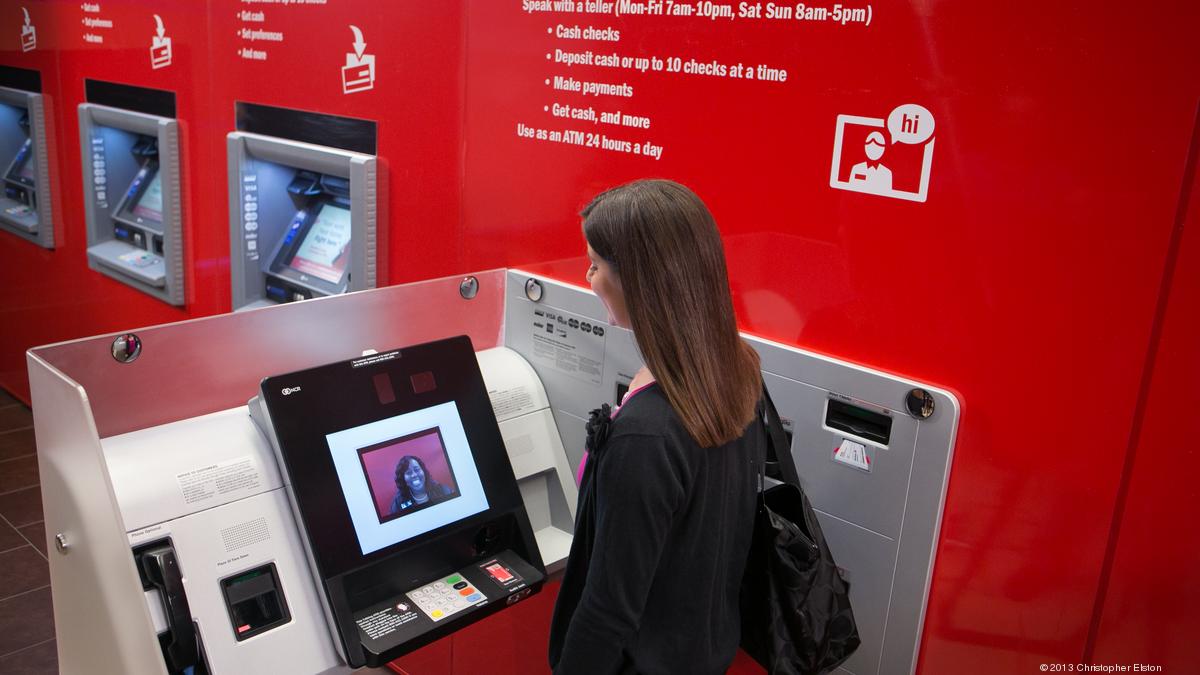

Finance
What Is CIP In Banking
Published: November 4, 2023
Learn about CIP in banking and its significance in the world of finance. Understand how this process helps ensure compliance and protect against fraud.
(Many of the links in this article redirect to a specific reviewed product. Your purchase of these products through affiliate links helps to generate commission for LiveWell, at no extra cost. Learn more)
Table of Contents
Introduction
Welcome to the world of banking! As you navigate through the intricate financial landscape, you may come across various acronyms and terms that can often seem daunting. One such term is CIP, which stands for Customer Identification Program. CIP is an essential component of banking regulations that plays a crucial role in ensuring the integrity of the financial system.
So, what exactly is CIP? In simple terms, it is a process that banks and financial institutions follow to accurately identify and verify the identity of their customers. The primary aim of CIP is to prevent money laundering, terrorist financing, fraud, and other illicit activities.
As the banking industry advances and digital transactions become more prevalent, CIP has become even more critical. Banks need to adopt stringent measures to ensure the authenticity of their customers and protect against various risks.
In this article, we will delve deeper into the significance of CIP in banking, explore the requirements for implementing an effective CIP program, and discuss its impact on customers. Whether you’re a banking professional or a curious individual looking to expand your financial knowledge, this article will shed light on the intricacies of CIP in banking.
Definition of CIP in Banking
Customer Identification Program (CIP) in banking refers to the process and procedures that financial institutions must follow to verify the identity of their customers. It is a critical component of regulatory compliance that helps prevent fraud, money laundering, terrorist financing, and other illicit activities.
The goal of CIP is to establish the true identity of customers, ensuring that they are who they claim to be. By implementing a robust CIP, banks can mitigate the risks associated with financial crimes and maintain the integrity of the banking system.
In the United States, CIP is mandated under the Bank Secrecy Act (BSA) and Anti-Money Laundering (AML) regulations enforced by the Financial Crimes Enforcement Network (FinCEN). Other countries also have their own regulations and guidelines regarding customer identification in the banking sector.
The CIP process typically involves collecting identifying information and verifying it through reliable sources such as government-issued identification documents and independent databases. The information obtained may include the customer’s name, address, date of birth, Social Security number or tax identification number, and other relevant details.
Financial institutions employ various methods to verify customer identities, such as comparing identification documents against government databases, conducting background checks, and employing risk-based procedures to determine the level of verification required. In some cases, banks may use electronic identity verification tools or rely on in-person interviews to establish identity.
It’s important to note that CIP requirements are not limited to opening new accounts. Financial institutions are also required to periodically update customer information and perform ongoing due diligence to ensure the continuing accuracy and validity of customer identities.
By adhering to CIP regulations, banks can detect and deter fraudulent activities, protect the interests of legitimate customers, and contribute to the overall stability and security of the financial system.
Importance of CIP in Banking
The Customer Identification Program (CIP) is of paramount importance in the banking industry. It serves as a crucial safeguard against financial crimes and helps maintain the integrity of the banking system. Here are some key reasons why CIP is essential:
1. Fraud Prevention: One of the primary objectives of CIP is to prevent fraudulent activities such as identity theft, account takeover, and unauthorized transactions. By verifying customer identities, banks can ensure that only legitimate individuals have access to financial services and mitigate the risk of fraudulent activities.
2. Money Laundering Prevention: CIP plays a vital role in preventing money laundering, the process by which illicitly obtained funds are made to appear legitimate. By verifying customer identities, financial institutions can identify suspicious transactions and report them to the appropriate authorities, thereby helping to disrupt money laundering networks.
3. Terrorist Financing Prevention: CIP is also instrumental in preventing terrorist financing. By thoroughly vetting customer identities, banks can detect any potential links to terrorist organizations or individuals involved in funding illegal activities. This helps in safeguarding the financial system from being exploited for illicit purposes.
4. Legal and Regulatory Compliance: CIP is not only essential for preventing financial crimes but also for ensuring compliance with legal and regulatory requirements. Banks are legally obligated to have robust customer identification processes in place to abide by the Anti-Money Laundering (AML) laws and regulations enforced by regulatory bodies such as FinCEN in the United States.
5. Reputation and Risk Management: Implementing a strong CIP program helps banks protect their reputation by reducing the risk of being associated with illegal activities. This, in turn, enhances the trust and confidence of customers, investors, and regulators in the institution, leading to a strengthened overall risk management framework.
6. Enhanced Customer Protection: CIP safeguards the interests of customers by ensuring that their accounts and personal information are protected. By verifying customer identities, banks can prevent unauthorized individuals from gaining access to accounts and helps in resolving any identity-related issues promptly.
Considering the increasing sophistication of financial crimes, CIP is an indispensable tool in the arsenal of banks and financial institutions. It helps them stay ahead of potential threats, protect their customers, and contribute to a more secure and reliable banking ecosystem.
CIP Requirements in Banking
Customer Identification Program (CIP) requirements in banking outline the guidelines and procedures that financial institutions must adhere to in order to establish and verify the identity of their customers. These requirements vary across jurisdictions; however, there are some common elements that banks need to incorporate into their CIP programs. Here are the key requirements for implementing an effective CIP in banking:
1. Customer Identification
Banks must collect and verify specific information from customers to establish their identity. This includes their full name, date of birth, residential address, and identification numbers such as Social Security numbers or passport details. The level of verification required may vary depending on the risk assessment conducted by the bank.
2. Reliable Documentation
Financial institutions must rely on reliable and valid identification documents provided by customers. These documents typically include government-issued identification cards, passports, or driver’s licenses. Banks must verify the authenticity of these documents through appropriate sources to ensure the accuracy of customer identities.
3. Recordkeeping and Documentation
Banks are required to maintain proper records and documentation of the identification process. This includes copies of identification documents, records of verification, and any additional information obtained during the customer identification process. These records should be stored securely and made available for inspection by regulatory authorities as and when required.
4. Risk Assessment
Financial institutions are expected to conduct a risk assessment to determine the level of due diligence needed for each customer. The risk assessment should consider factors such as the type of account, the nature of the customer’s activities, and the level of potential risk associated with the customer, amongst other considerations. The risk assessment helps banks ascertain the appropriate level and intensity of customer identification and verification measures.
5. Ongoing Monitoring and Updating of Customer Information
CIP requirements are not limited to the initial identification process. Financial institutions must also establish procedures for periodically updating and monitoring customer information. Banks should have mechanisms in place to detect any changes in customer circumstances or patterns that might require additional verification or scrutiny.
6. Training and Oversight
Financial institutions must ensure that their employees are adequately trained and equipped to implement the CIP requirements effectively. Regular training sessions and updates on regulatory changes are essential to keep the staff informed and compliant. Additionally, there should be ongoing oversight and internal controls in place to ensure the proper implementation of the CIP program.
It is crucial for banks to remain up-to-date with the specific CIP requirements of their jurisdiction and ensure compliance with the applicable laws and regulations. By doing so, financial institutions can mitigate risks, strengthen their customer identification processes, and contribute to a more secure and resilient banking industry.
How CIP Affects Customers
The Customer Identification Program (CIP) in banking has a direct impact on customers’ banking experience and the services they receive. While the primary purpose of CIP is to ensure regulatory compliance and prevent financial crimes, it can also affect the customer journey in various ways. Here’s a closer look at how CIP affects customers:
1. Account Opening Process
During the account opening process, customers are required to provide the necessary identification documents and information as part of the CIP requirements. This can include providing government-issued IDs, utility bills, or other supporting documentation to verify their identity. The verification process may take some time, but it is essential for establishing a secure banking relationship.
2. Enhanced Security Measures
CIP helps enhance the security of customers’ accounts and personal information. By implementing stringent identification and verification procedures, banks aim to protect customers from identity theft, unauthorized account access, and fraudulent activities. While these measures may require additional steps during transactions, they provide customers with peace of mind and a greater sense of security.
3. Potential Delays
As part of the CIP requirements, banks may need to conduct additional due diligence for customers deemed to be of higher risk. This extra scrutiny may lead to slight delays in account opening or transaction processing. While it may cause some inconvenience, it is necessary to maintain regulatory compliance and safeguard the financial system.
4. Updated Customer Information
Continual compliance with CIP regulations necessitates that banks periodically update and verify customer information. This may involve customers providing updated identification documents or additional details to ensure the accuracy and validity of their records. Keeping customer information up-to-date is crucial for maintaining transactional integrity and preventing fraudulent activities.
5. Increased Protection Against Financial Crimes
By implementing robust CIP procedures, banks can better protect their customers from financial crimes such as money laundering, terrorist financing, and fraud. The diligence of verifying customer identities helps create a secure banking environment, reducing the risk of unauthorized transactions that could negatively impact customers.
6. Privacy Concerns
Customers may have concerns about the privacy of their personal information when undergoing the CIP process. It is essential for banks to clearly communicate their data protection policies and reassure customers that their information will be handled securely and in accordance with applicable laws and regulations.
While CIP may introduce additional steps and requirements for customers, it is ultimately designed to protect their interests and the integrity of the banking system. By implementing proper CIP procedures, financial institutions can ensure a safer and more secure banking experience for their customers.
CIP Compliance Challenges
The implementation of a comprehensive and effective Customer Identification Program (CIP) in banking comes with its fair share of challenges. These challenges stem from various factors such as evolving regulatory requirements, technological advancements, and the complexity of the banking industry. Here are some common compliance challenges faced by financial institutions regarding CIP:
1. Evolving Regulatory Landscape
Regulations and compliance requirements surrounding customer identification in the banking sector are continuously evolving. Staying abreast of these changes and ensuring compliance can be a challenge for financial institutions, especially those operating in multiple jurisdictions with different sets of regulations. Regular monitoring and updating of CIP policies and procedures are necessary to keep up with the evolving regulatory landscape.
2. Balancing Compliance and Customer Experience
CIP requirements can sometimes lengthen the account opening process or introduce additional verification steps, potentially impacting the customer experience. Striking a balance between stringent compliance measures and providing a seamless customer journey requires careful consideration. Financial institutions need to implement efficient and user-friendly CIP procedures that prioritize both compliance and customer satisfaction.
3. Cost and Resource Allocation
Complying with CIP regulations requires dedicated resources, including staff, technology, and training. Financial institutions must allocate the appropriate budget and personnel to implement and maintain an effective CIP program. Additionally, updating technology systems to accommodate changing compliance requirements can be costly. Proper resource allocation is crucial to ensure ongoing compliance.
4. Technological Advancements
The rapid advancement of technology poses both opportunities and challenges for CIP compliance. While technological solutions such as electronic identity verification tools and biometric authentication can streamline the identification process, financial institutions must carefully evaluate and implement secure and reliable technologies that comply with regulatory guidelines. Ensuring data protection and privacy in the digital age is a critical concern when implementing technology-based CIP solutions.
5. Keeping Pace with Customer Interaction Channels
Traditional banking channels are expanding to include digital platforms, mobile applications, and online transactions. Financial institutions must ensure that their CIP procedures are adaptable and effective across these various customer interaction channels. They should implement seamless and secure customer identification processes that align with changing customer preferences and technological advancements.
6. Staff Training and Competency
Effective CIP implementation relies on well-trained staff who understand the importance of compliance and can effectively carry out customer identification procedures. Ongoing training and education programs are necessary to keep employees updated on regulatory changes, industry best practices, and emerging risks. Ensuring that all staff members are competent and aware of their responsibilities helps maintain compliance and reduces the risk of errors or oversights.
Overcoming these compliance challenges requires proactive monitoring, a commitment to ongoing education and training, strategic resource allocation, and leveraging technology to streamline processes. A proactive approach to addressing the compliance challenges associated with CIP is essential for financial institutions to maintain regulatory compliance and effectively combat financial crimes.
CIP Best Practices
Implementing best practices for Customer Identification Programs (CIP) in the banking sector is crucial for maintaining regulatory compliance and effectively mitigating financial risks. Here are some key best practices that financial institutions should consider when developing and implementing their CIP:
1. Risk-Based Approach
Adopt a risk-based approach when implementing CIP measures. Assess the risk profile of customers based on factors such as their transaction patterns, geographical location, and industry sector. Tailor the level of customer identification and verification procedures accordingly to ensure that higher-risk customers receive greater scrutiny.
2. Clear Policies and Procedures
Establish clear and concise policies and procedures outlining the CIP requirements within the organization. These guidelines should provide step-by-step instructions for staff to follow when verifying customer identities and maintaining records. Regularly review and update these policies to align with regulatory changes.
3. Document Retention and Security
Develop a robust system for secure document retention and storage of customer identification records. Ensure that records are maintained for the required period specified by regulatory authorities. Implement measures to safeguard customer information from unauthorized access, including encryption, secure databases, and access controls.
4. Ongoing Monitoring and Reporting
Implement an effective monitoring system to regularly review and assess customer accounts for suspicious or unusual activities. Establish tools and procedures to identify and report suspicious transactions promptly to the appropriate authorities, in compliance with Anti-Money Laundering (AML) regulations.
5. Staff Training and Awareness
Conduct regular training programs to educate staff on the importance of CIP compliance and the latest regulatory requirements. Ensure that employees fully understand their roles and responsibilities in implementing customer identification procedures. Foster a culture of compliance and vigilance throughout the organization.
6. Adoption of Technology
Leverage technology solutions to streamline and enhance the customer identification process. Implement electronic identity verification tools, biometric authentication, and other advanced technologies to increase accuracy, efficiency, and security. Evaluate and select technology solutions that are compliant with data protection and privacy laws.
7. Periodic Review and Evaluation
Regularly review and evaluate the effectiveness of the CIP program. Conduct internal audits to identify any gaps or areas for improvement in the customer identification process. Stay updated on evolving regulatory requirements and industry best practices to ensure ongoing compliance.
By following these best practices, financial institutions can establish a robust and effective Customer Identification Program. Implementing a risk-based approach, maintaining clear policies and procedures, and leveraging technology enables banks to meet compliance requirements while ensuring a seamless customer experience and maintaining the integrity of the financial system.
Conclusion
The Customer Identification Program (CIP) is a vital component of banking operations, playing a critical role in preventing financial crimes, safeguarding the integrity of the financial system, and protecting customers. By establishing and verifying the identity of customers, financial institutions can mitigate the risks associated with fraud, money laundering, and terrorist financing.
CIP requirements in banking involve collecting and verifying customer information, maintaining proper documentation, conducting risk assessments, and implementing appropriate monitoring and reporting mechanisms. While CIP compliance presents challenges such as evolving regulatory landscape, resource allocation, and technological advancements, these can be overcome through proactive monitoring, staff training, and strategic planning.
Customers are impacted by CIP through the account opening process, enhanced security measures, and occasional delays. However, the ultimate goal is to provide a safe and secure banking environment for customers, protecting their identities, and ensuring the integrity of their accounts.
Financial institutions should prioritize best practices such as adopting a risk-based approach, establishing clear policies and procedures, securing customer information, ongoing monitoring, training staff, leveraging technology, and regularly reviewing and evaluating the CIP program. These best practices enable banks to comply with regulatory requirements, enhance customer protection, and contribute to a more secure and resilient banking ecosystem.
As the banking industry continues to evolve, CIP remains a critical aspect of financial operations. By implementing effective CIP measures, financial institutions can maintain regulatory compliance, protect customers, and contribute to the overall stability and integrity of the banking system.














